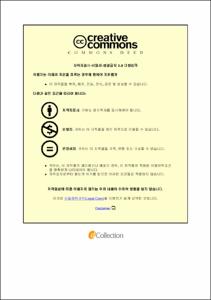2009 개정 교육과정에 따른 중학교 2학년 영어교과서 삽화의 문화적 요소 분석
- Alternative Title
- An Analysis of Cultural Elements on Visuals in Second Year Middle School English Textbooks Based on the 2009 Revised National Curriculum
- Abstract
- The purpose of this study was to examine cultural aspects which were based on visuals in Korean middle school English textbooks. To achieve this purpose, 10 middle school English textbooks for second year based on the 2009 Revised Curriculum were selected. The visuals in the textbooks were analyzed according to the five criteria related to cultural elements. First, visuals were categorized by big C Culture and little c culture. Second, the visuals were analyzed and broken down into five categories according to cultural backgrounds; Korean culture, British and American cultures, other cultures, comparing and contrasting cultures, and universal cultures. Third, 19 topics stipulated in the Revised Curriculum were used to analyze the visuals. Fourth, visuals were categorized into language skills, i.e. listening, speaking, reading, and writing, to see how cultural elements were distributed in the visuals. The last criterion for the analysis was the cultural distribution in the cultural corners where various cultures were introduced in the textbooks.
The findings of this study were as follows. First, there were more visuals which expressed little c culture than those that expressed big C Culture. The textbooks analyzed seem to focus on how students can most effectively acquire the given knowledge through English. Little c culture could be easier for the second year middle school students to understand than big C Culture which includes literature, art, and music. Second, universal cultures had the highest ratio in cultural backgrounds in every textbook. However, the ratio of Korean culture, British and American cultures, other cultures, and comparing and contrasting cultures appeared to be diverse among the textbooks. The explanation for this result could be that they are useful in helping students understand the cultures without compunction rather than other cultures. Third, the most frequent topic shown in the visuals about culture was Topic 8, which shows daily lives of people in various cultures although the differences exist among the textbooks. It seems that the textbook writers tried to introduce cultures using the topics which students can compare the cultures in the textbooks with their own and become interested in them. Fourth, with regard to the language skills, reading was found to have the most varied cultural visuals. The textbook writers might have considered this skill to be apt to introduce the cultures through many kinds of stories, so visuals are also meant to be various. All aspects of cultural distribution of visuals between the aforementioned analysis and the language skills were similar. However, there existed subtle differences among language skills regarding ways of cultures. Lastly, every cultural corner in the textbooks appeared to be different in number and proportion. In cultural backgrounds, the number of comparing and contrasting cultures ranked the second highest next to universal cultures. It seems to show the writers’ perspectives toward the importance of cultures.
Based on the above results, the following suggestions are made. First, more studies about the relationship between cultures and visuals are needed as visuals play an important role in the textbooks, and they have gradually gained more importance in helping students learn about and understand other cultures. Studying the visuals in relation to cultures will be meaningful in that sense. Second, we have learned that more studies on how visuals can affect students’ learning of the English language and its culture more effectively are needed, and this is expected to improve the quality of the textbooks for them.
- Issued Date
- 2018
- Awarded Date
- 2018.2
- Type
- Dissertation
- Publisher
- 부경대학교
- Affiliation
- 부경대학교 교육대학원
- Department
- 교육대학원 영어교육전공
- Advisor
- 박매란
- Table Of Contents
- Abstract ⅴ
Ⅰ. 서론 1
1.1 연구의 필요성 및 목적 1
1.1.1 연구의 필요성 1
1.1.2 연구의 목적 3
1.2 연구 문제 4
1.3 연구의 제한점 5
Ⅱ. 이론적 배경 6
2.1 영어교과의 학습 목표 6
2.2 영어교과서의 역할 7
2.3 영어교과서에서의 삽화 8
2.3.1 삽화의 정의 8
2.3.2 삽화의 기능 10
2.3.3 삽화의 조건 13
2.4 영어교과서에서의 문화 16
2.4.1 문화의 정의 16
2.4.2 문화의 분류 18
2.4.3 문화교육의 필요성 21
2.5 선행 연구 23
Ⅲ. 연구 방법 26
3.1 연구 대상 26
3.2 분석 기준 28
3.3 자료 분석 방법 29
3.3.1 대문화와 소문화에 따른 분석 방법 29
3.3.2 문화배경을 통한 분석 방법 30
3.3.3 소재를 통한 분석 방법 32
3.3.4 언어 기능별 분석 방법 34
3.3.5 문화전용란 비교 34
Ⅳ. 자료 분석 결과 및 논의 36
4.1 대·소문화별 분석 36
4.2 문화 배경별 분석 38
4.3 문화 소재별 분석 40
4.4 언어 기능별 분석 43
4.5 문화전용란의 삽화 분석 44
Ⅴ. 결론 및 제언 60
5.1 결론 60
5.2 제언 63
참고 문헌 64
부록 71
- Degree
- Master
- Files in This Item:
-
-
Download
 2009 개정 교육과정에 따른 중학교 2학년 영어교과서 삽화의 문화적 요소 분석.pdf
기타 데이터 / 16.25 MB / Adobe PDF
2009 개정 교육과정에 따른 중학교 2학년 영어교과서 삽화의 문화적 요소 분석.pdf
기타 데이터 / 16.25 MB / Adobe PDF
-
Items in Repository are protected by copyright, with all rights reserved, unless otherwise indicated.